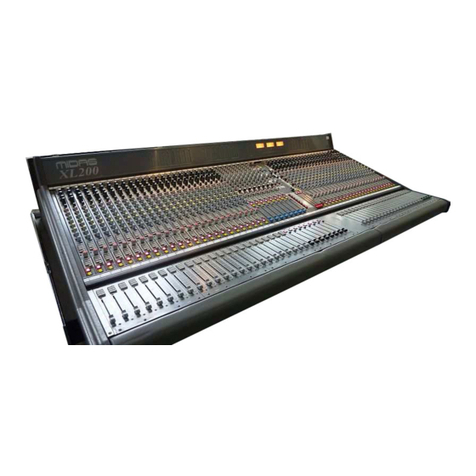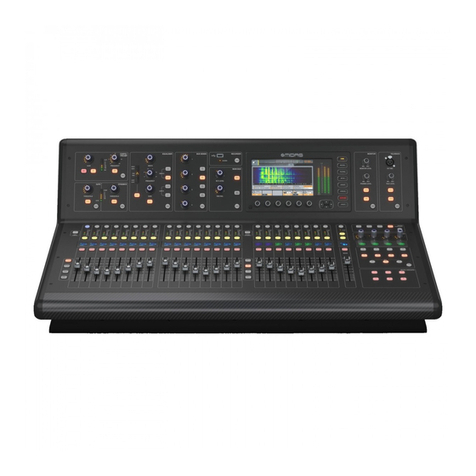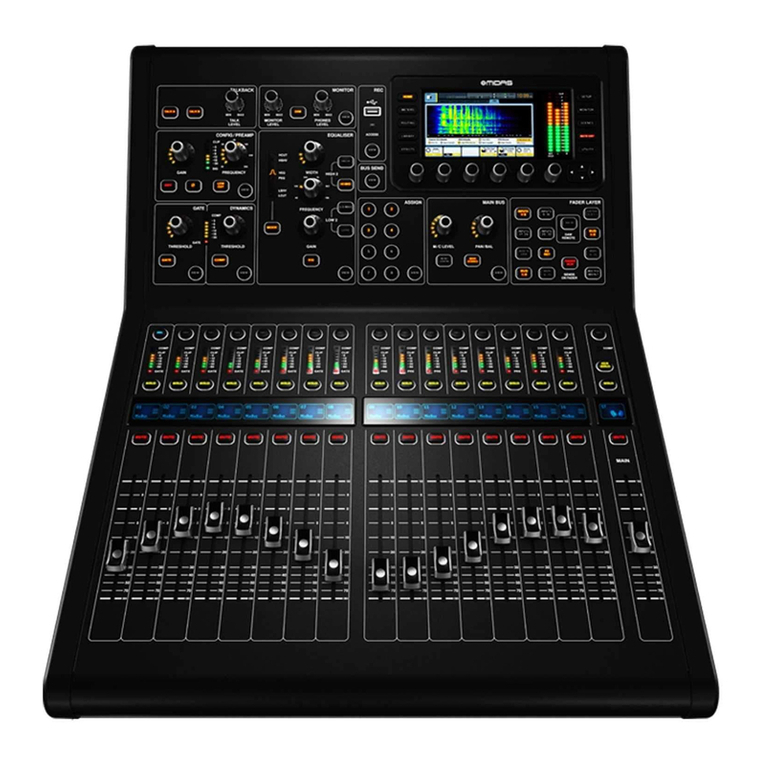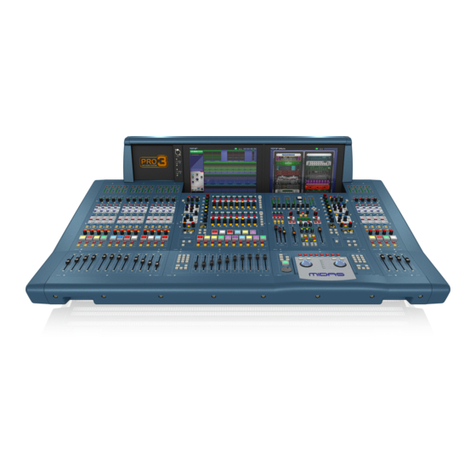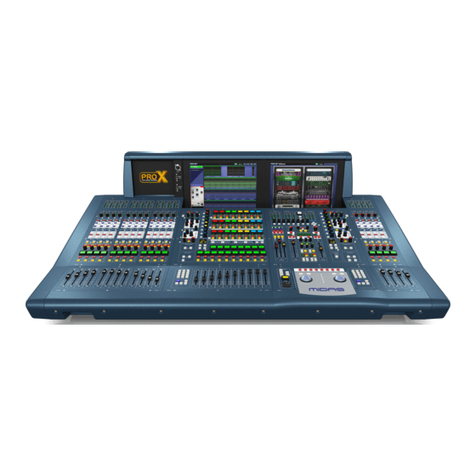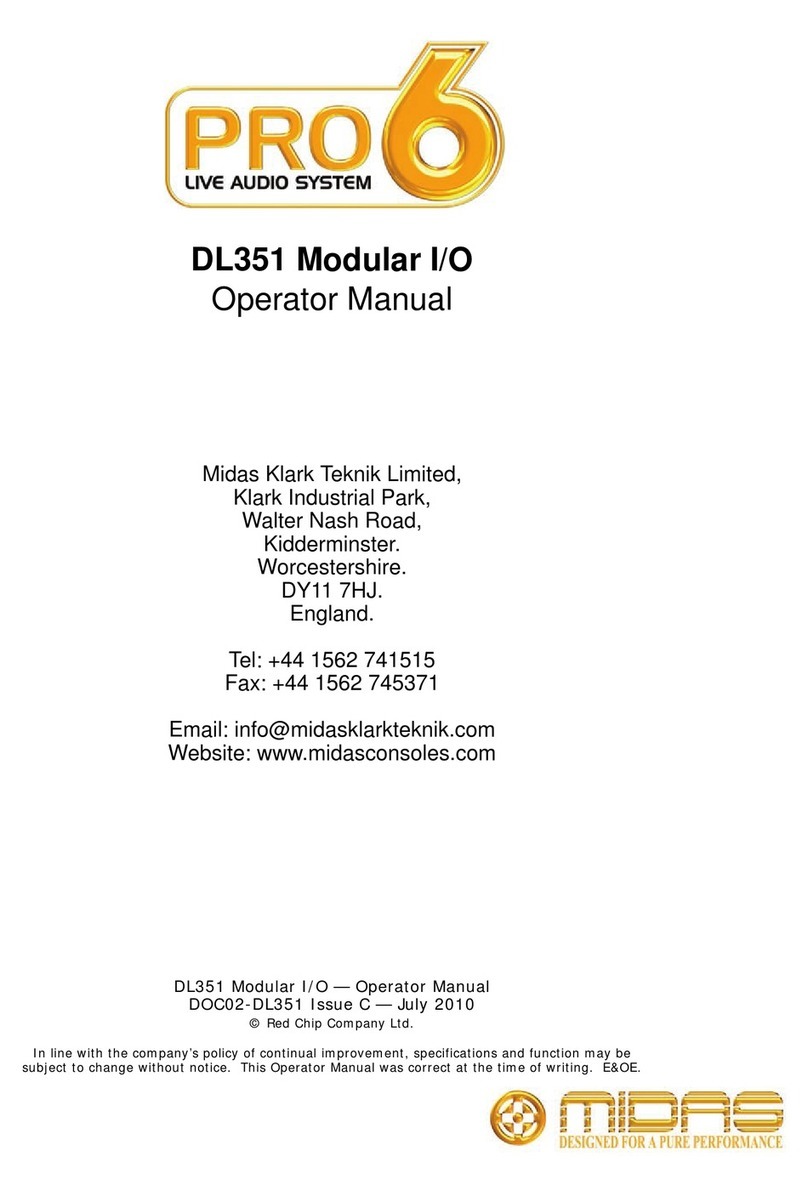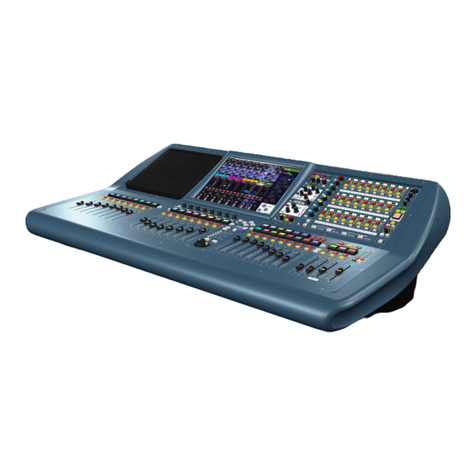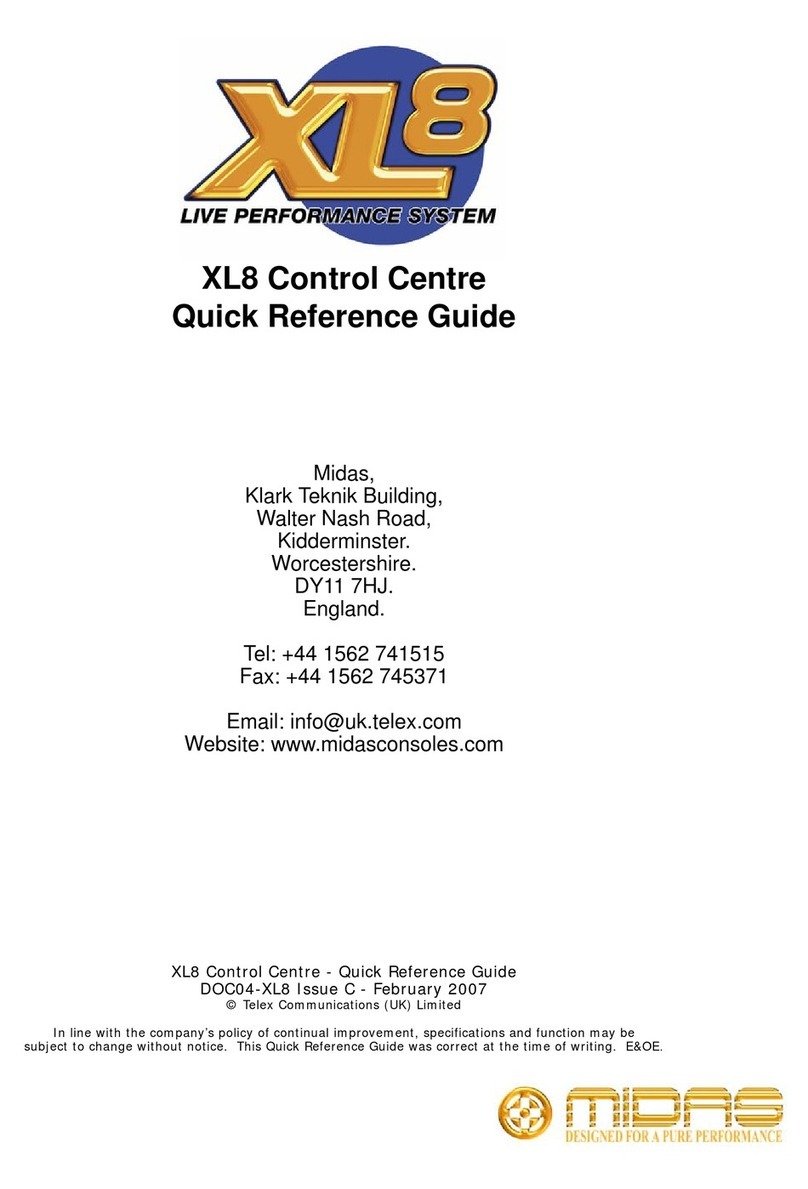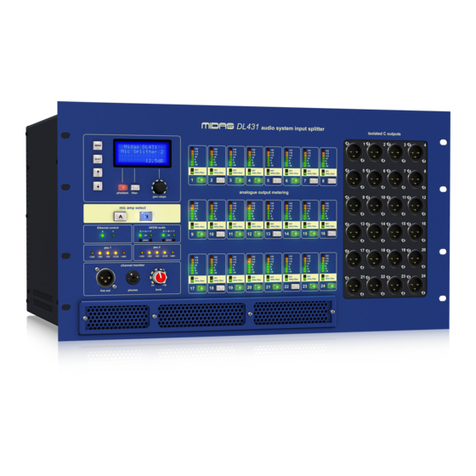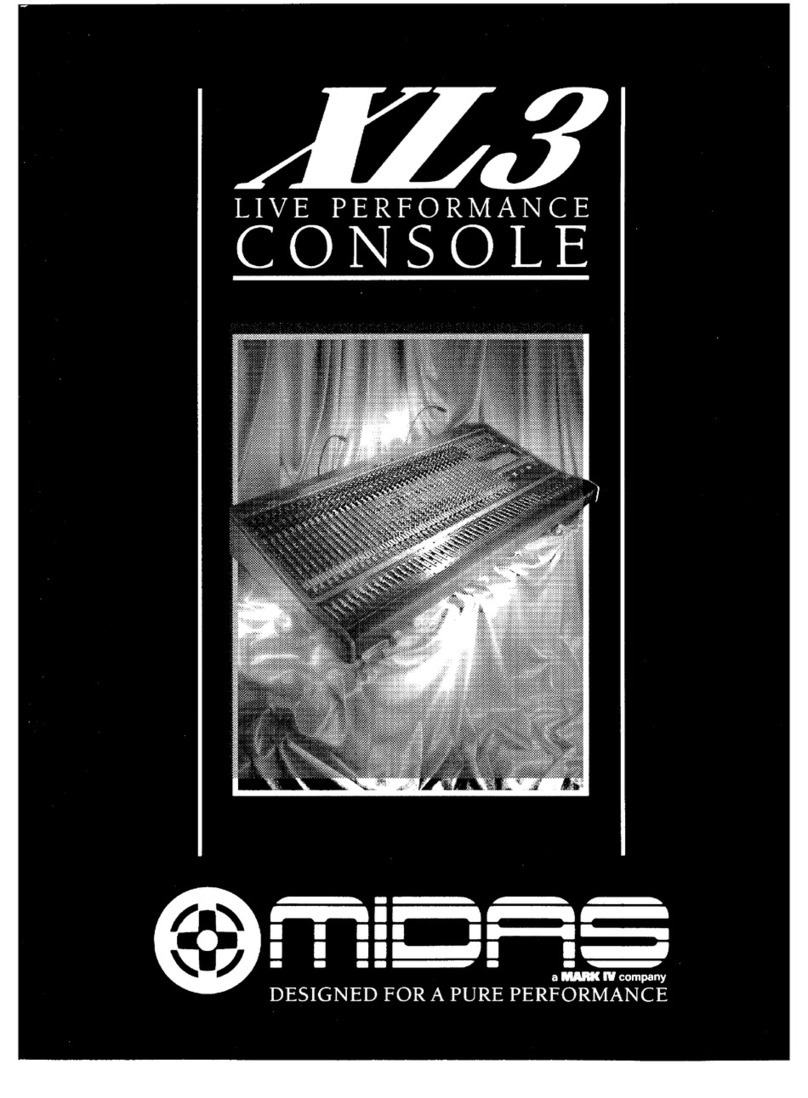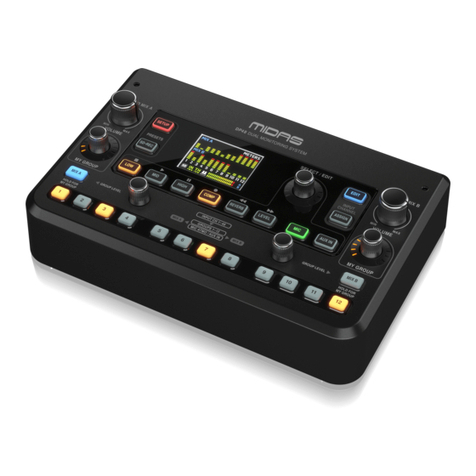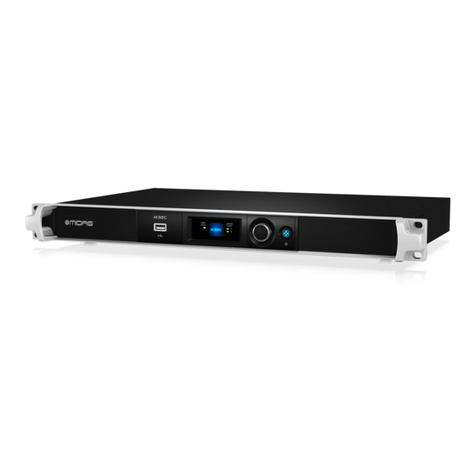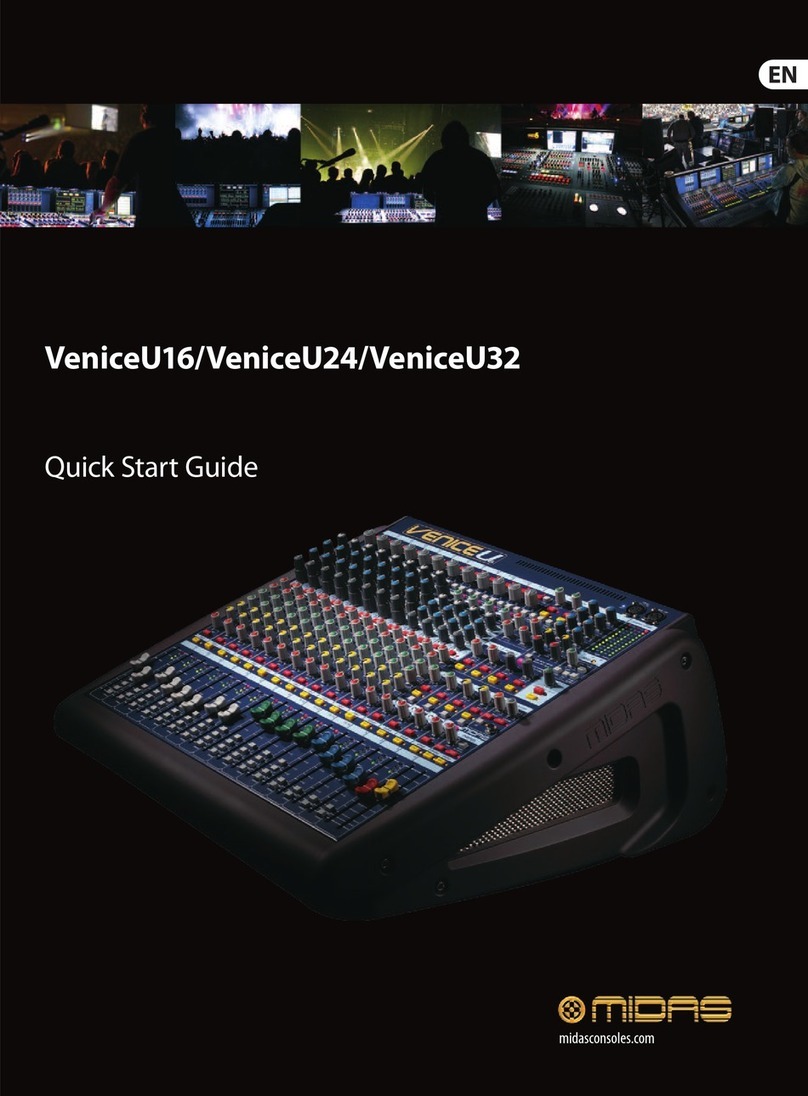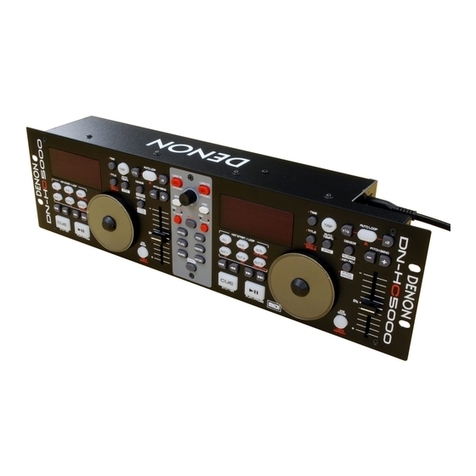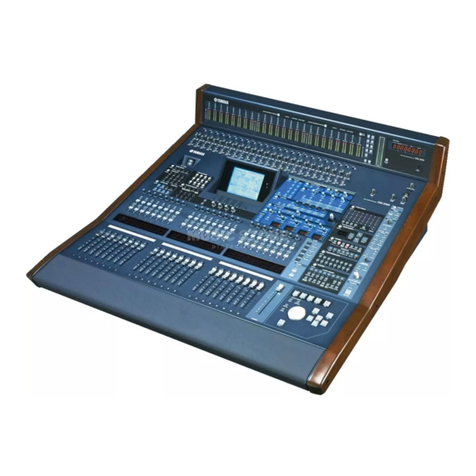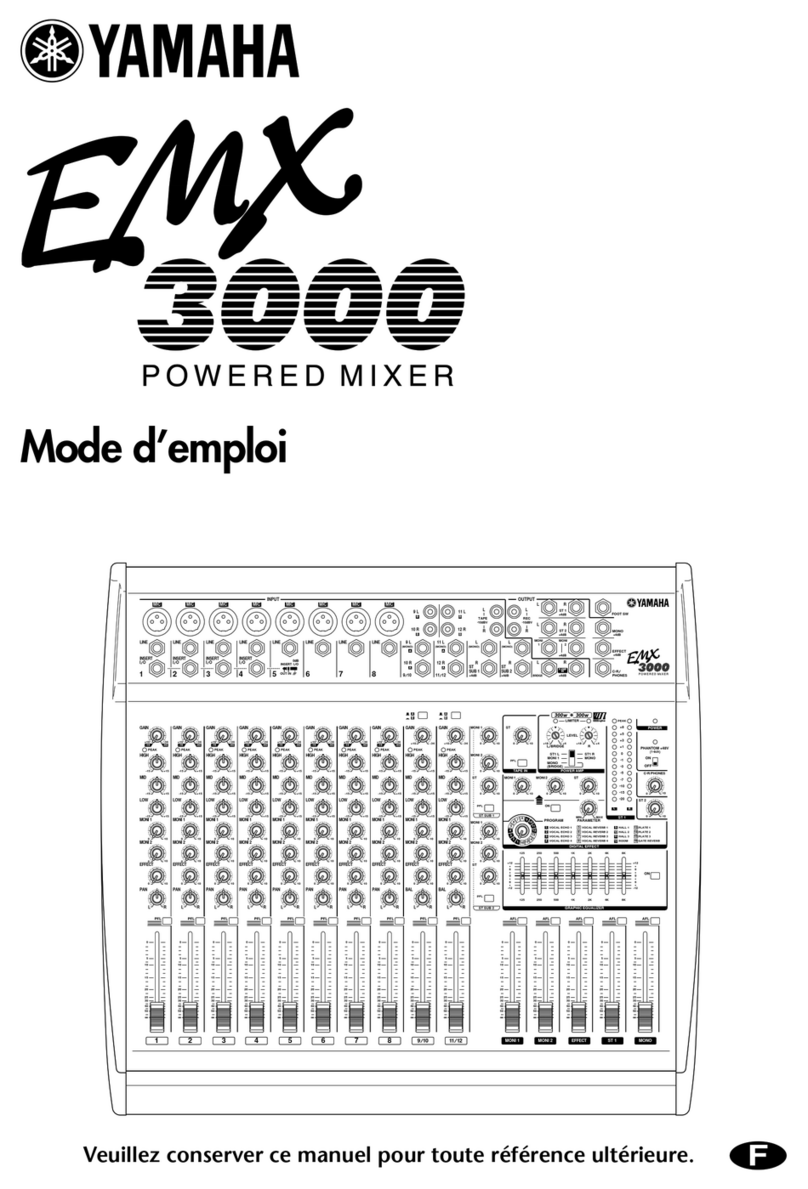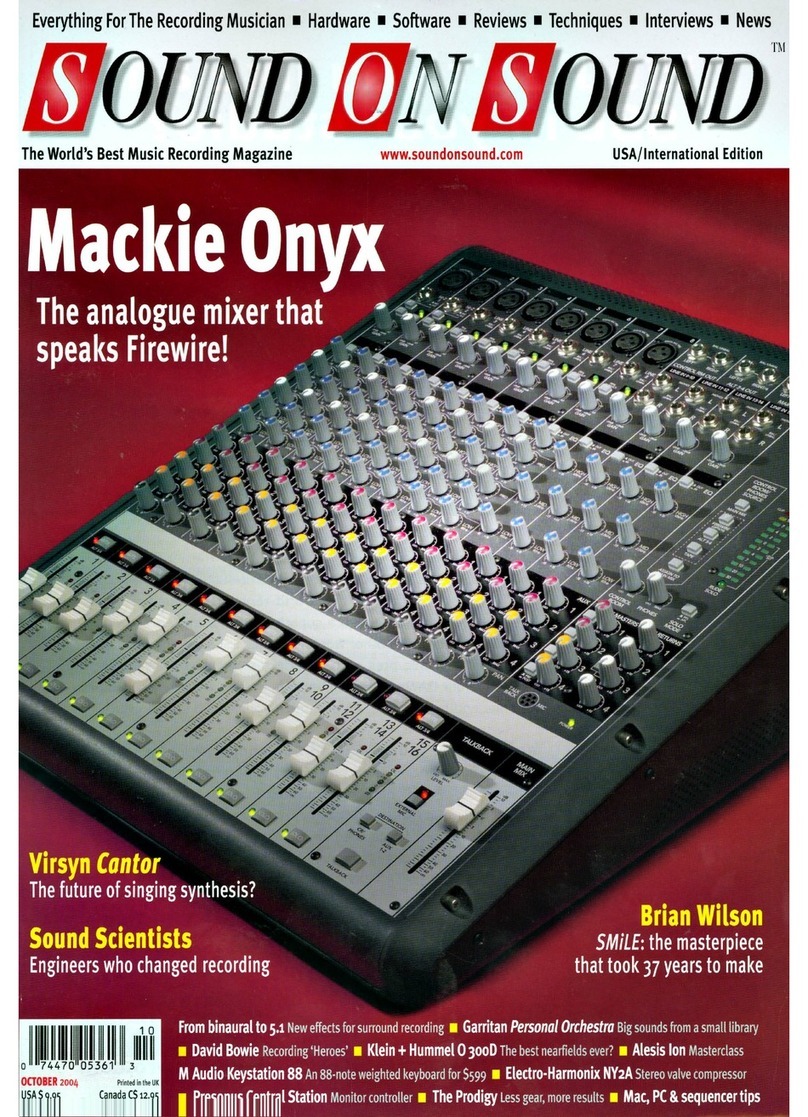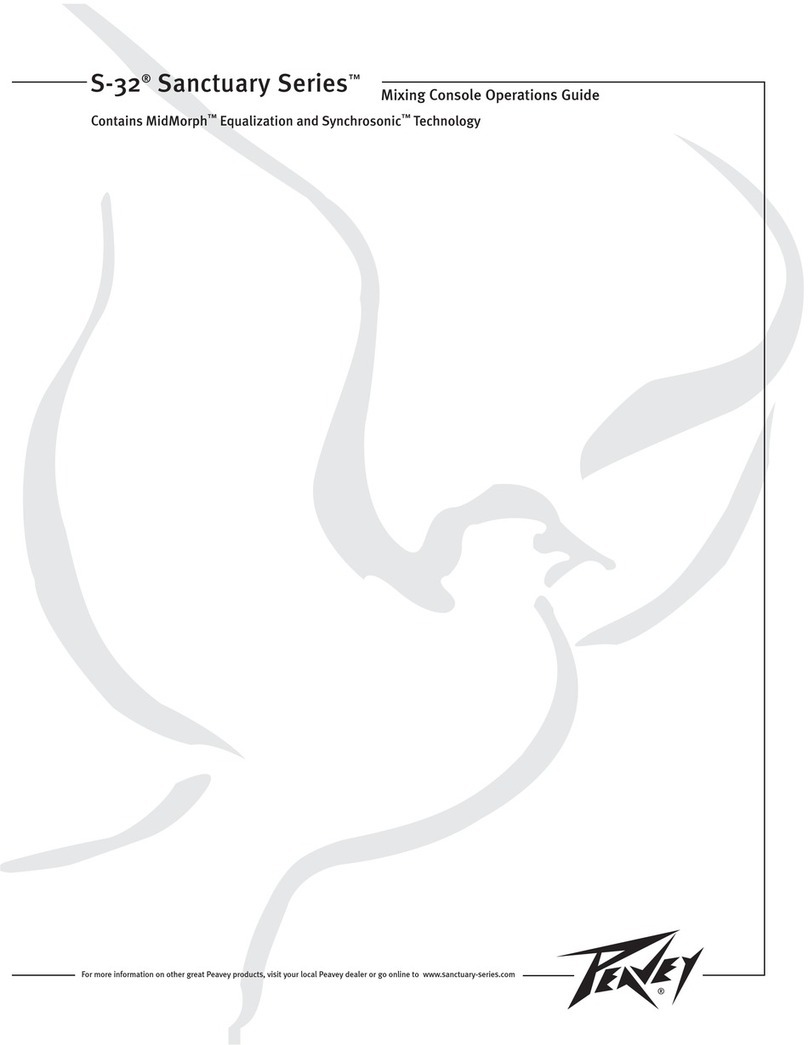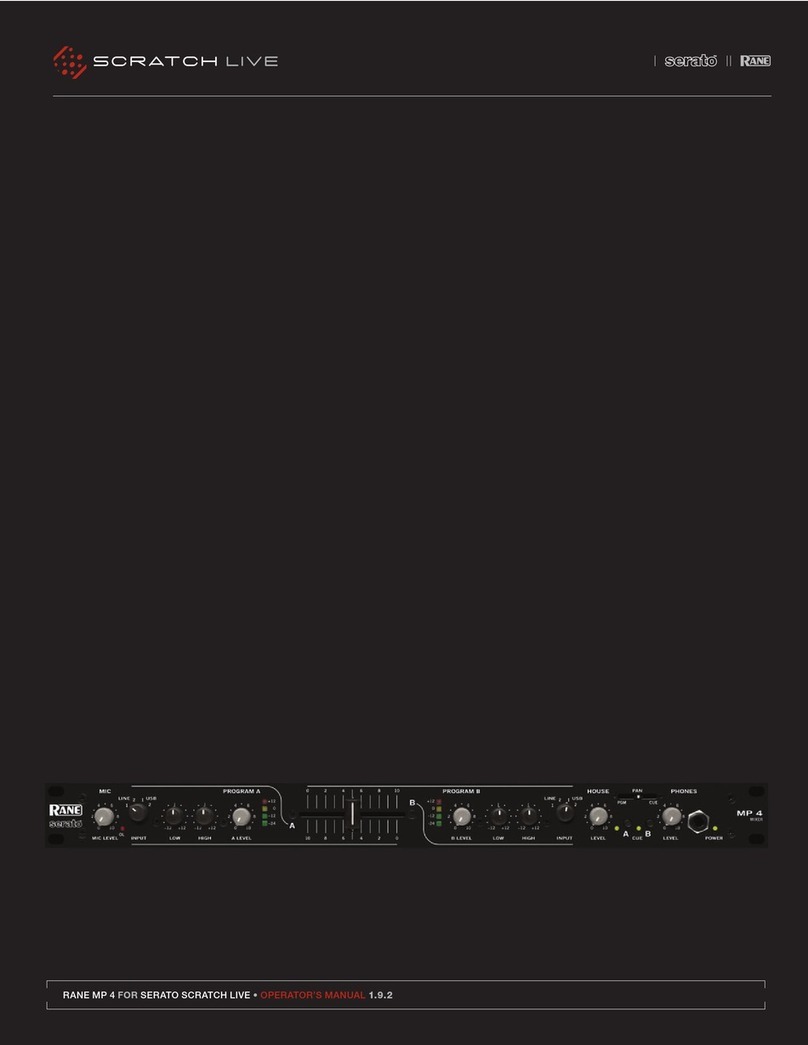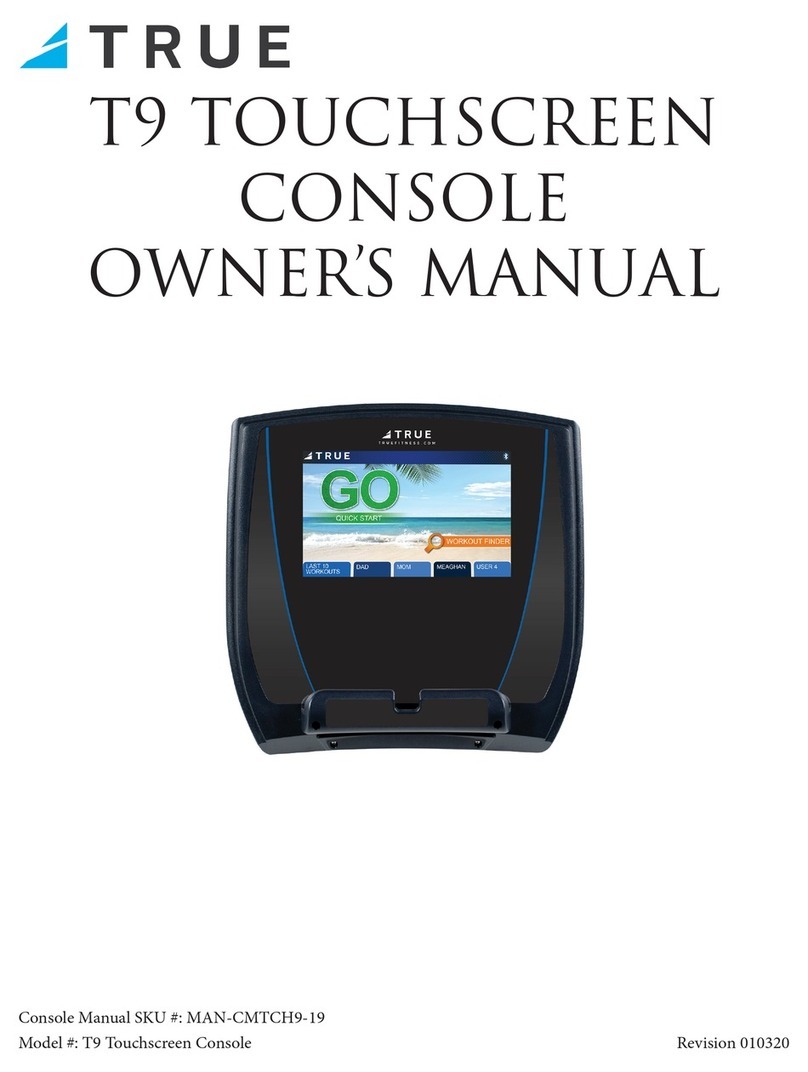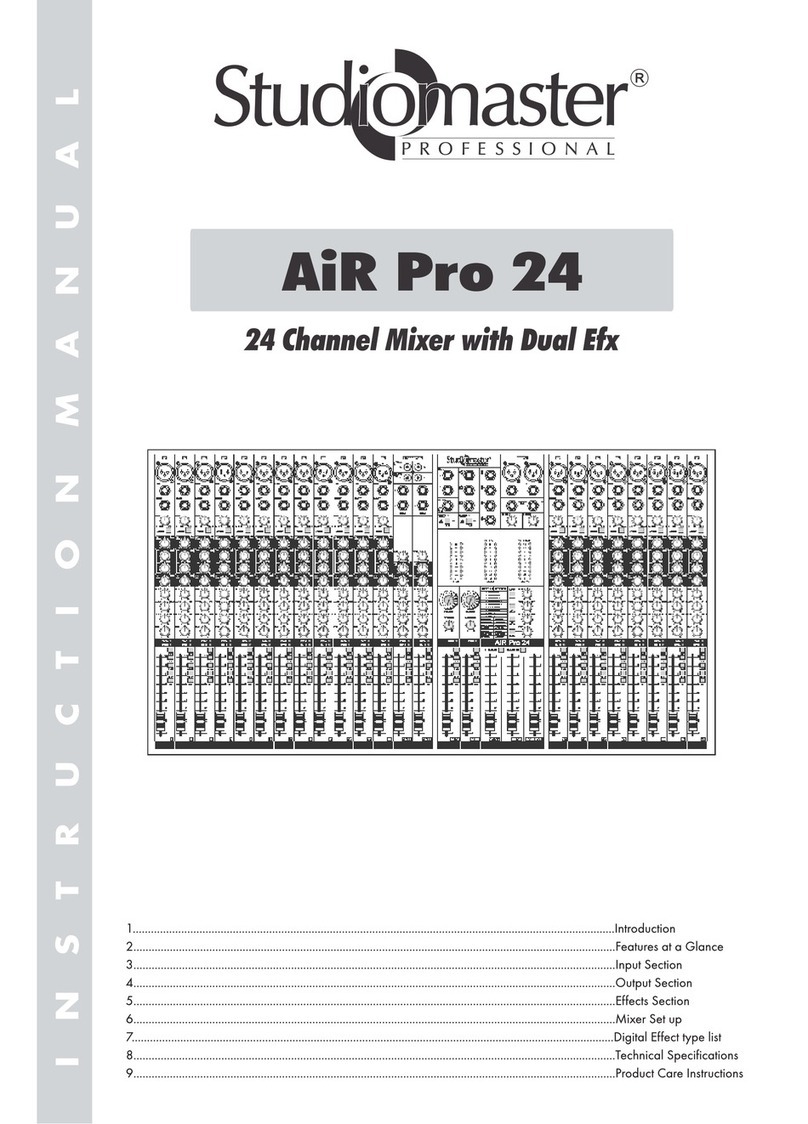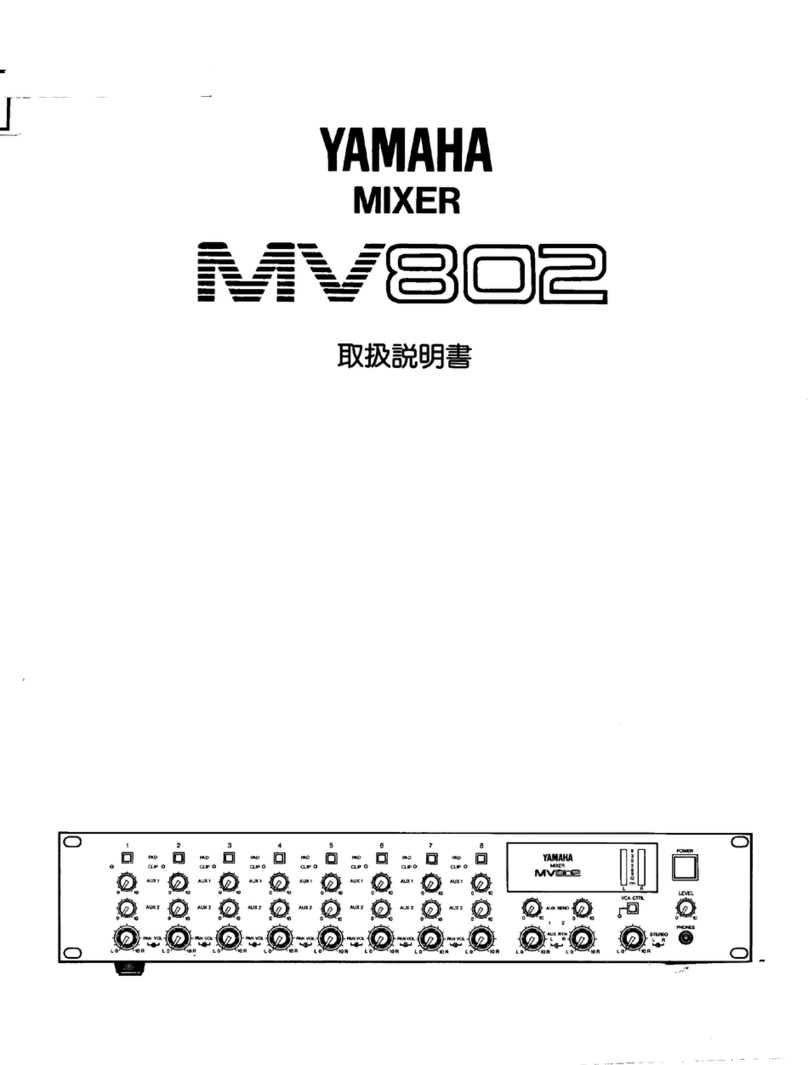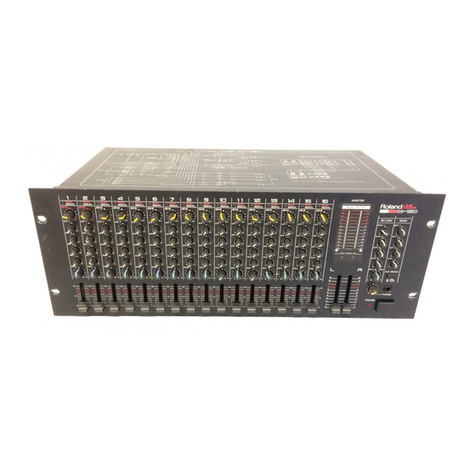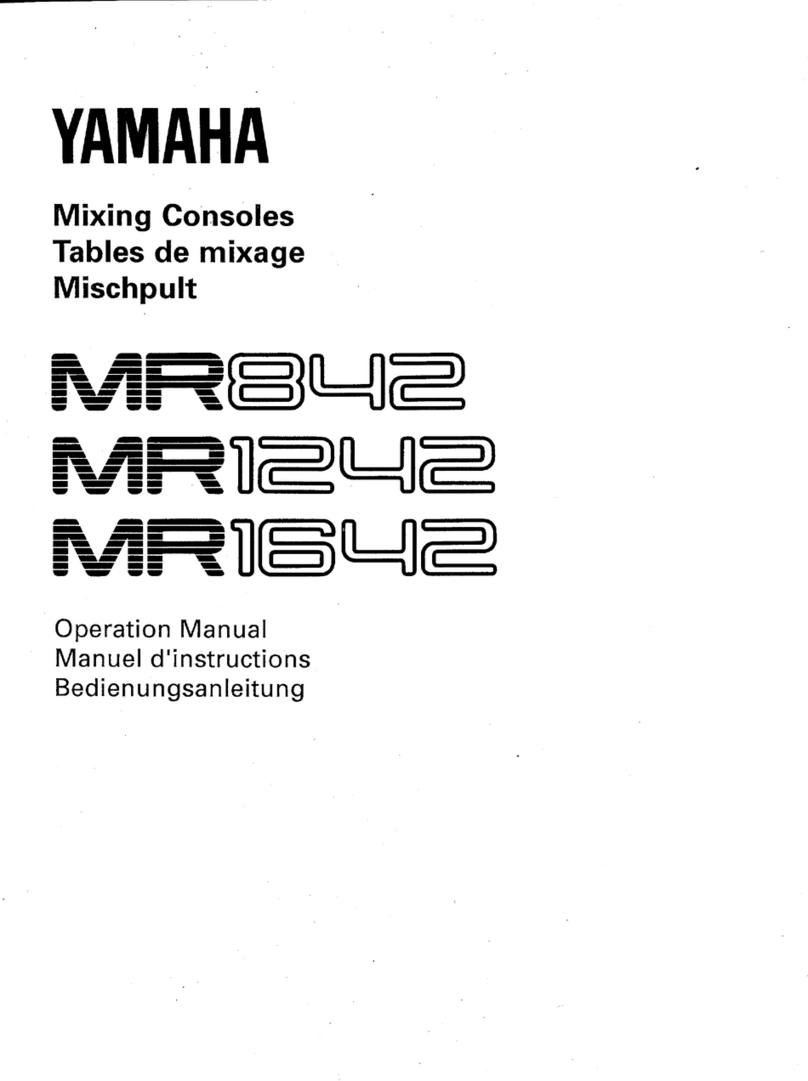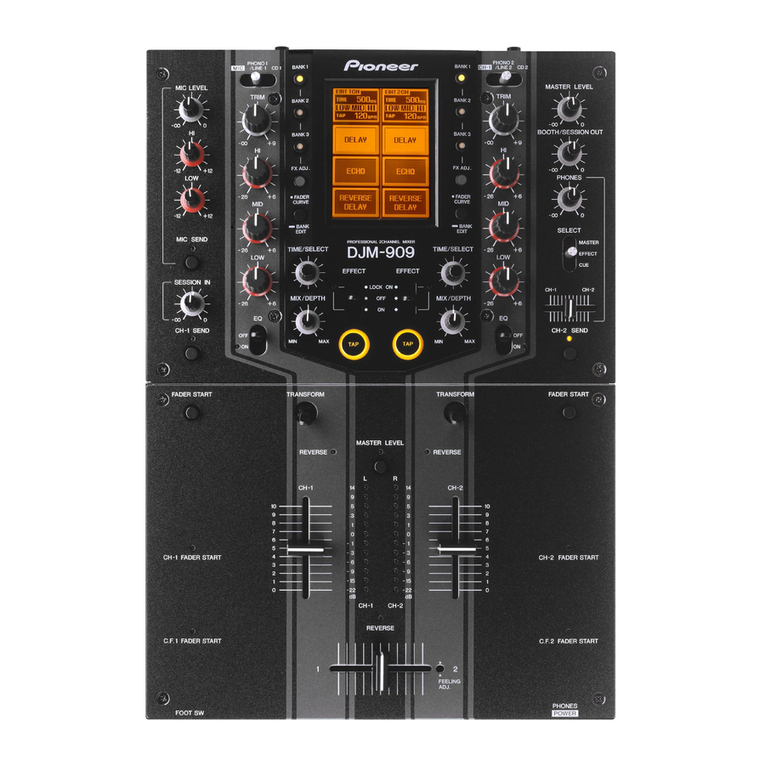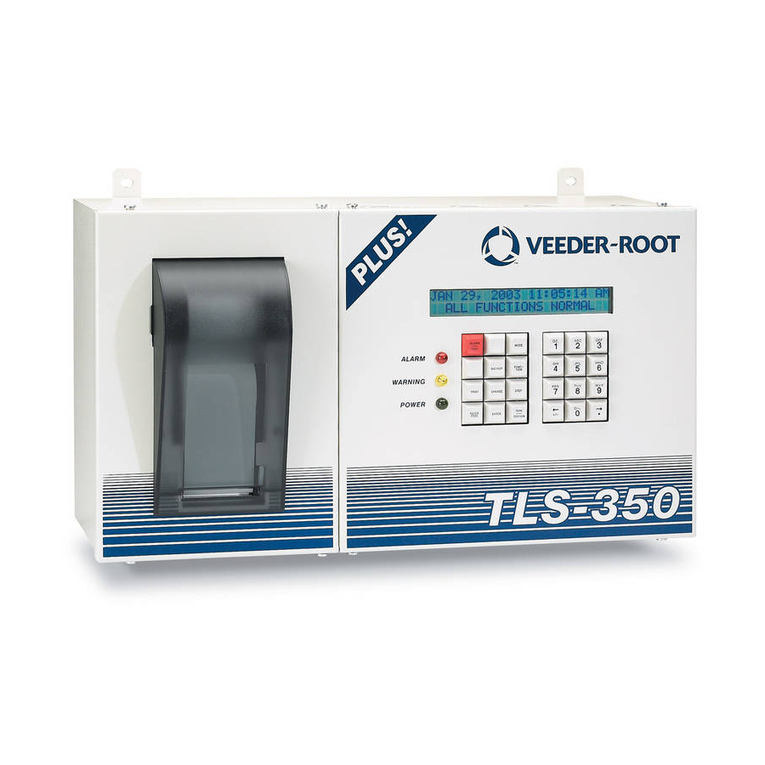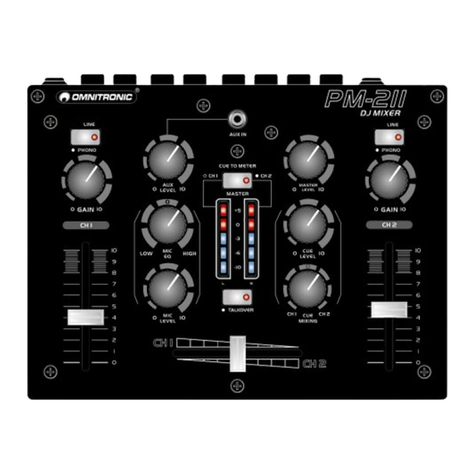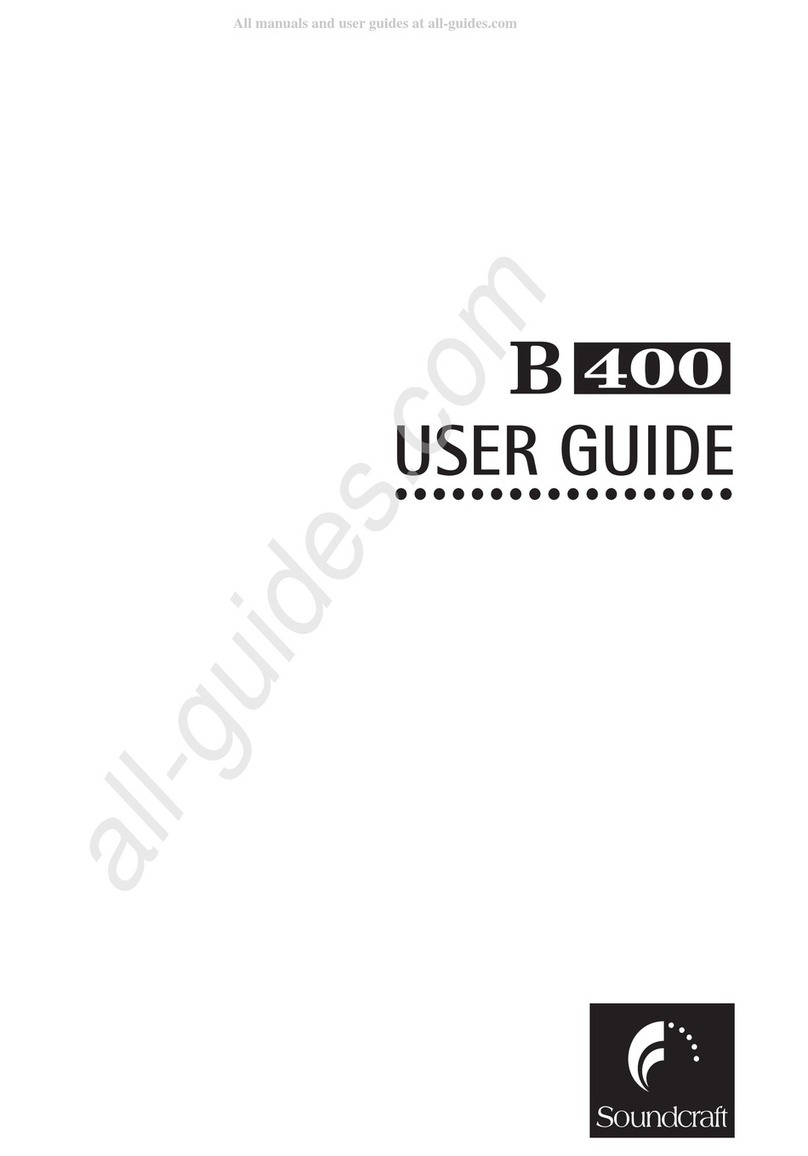Overview
• 56 mic/line inputs with Midas mic preamps
• 64 simultaneous input processing channels
• 32 analogue outputs
(including 2 stereo local monitor outputs)
• 3 AES3 outputs
• 2 AES3 inputs
• 27 sample-synchronous, phase-coherent
mix buses
• 6 multi-channel FX engines
• Up to 28 Klark Teknik DN370
31-band Graphic EQs
• Full-colour 15” daylight-viewable display screen
• 8 VCA (Variable Control Association) groups
• 6 POPulation groups
• 192 MCA (Mix Control Association) groups
• 96kHz 40-bit oating-point processing throughout
• 48 in 16 out 100m dual Cat-5E AES50 digital
snake included
Connectivity
The xed-format, integrated audio I/O on the rear
of the surface features the following connections:
• 8 x analogue mic/line inputs
with Midas mic pre’s (XLR)
• 8 x analogue outputs (XLR)
• 2 x AES3 inputs
• 3 x AES3 outputs (XLR)
• 6 x AES50 ports (RJ45)
• Local monitor A L&R and
Local monitor B L&R (XLR)
• Left, Right and Mono master outputs (XLR)
• Talk output (XLR)
• Talk Mic input (XLR)
Additional non-audio rear panel connections are:
• MIDI in, out and through
• AES3 clock in and out (XLRM & XLRF)
• Wordclock in and out (2 x BNC)
• Video (black burst) sync in (BNC)
• DVI video output from console screen (DVI)
• Ethernet control port (Ethercon RJ45)
• USB port (USB A)
I/O Options
• DL252 16in / 48 out xed conguration I/O
• DL351 Up to 64 in / 64 out congurable I/O
(8 card slots)
• DL451 Up to 24 in / 24 out congurable I/O
(3 card slots)
• DL431 24 in 5 way split: xed conguration I/O
Klark Teknik Accessories
• Klark Teknik DN9331 Rapide remote Graphic EQ
fader controller
• Klark Teknik DN9696 high resolution
audio recorder
• Klark Teknik DN9650 digital audio
format convertor
Mixer
In addition to the 56 primary input channels,
PRO2 features 8 aux returns, all of which feature
4-band parametric EQ and insert points. These 8
aux returns can be used as returns for the PRO2’s
internal FX processors, or as additional mic
channels, if enough mic inputs are available on
the network I/O hardware.
A total of 64 input channels have routing to
27 mix buses. These buses comprise 16 user-
congurable aux buses, which can be mixes,
subgroups or mix minus groups, and the 8 matrix
buses. The Matrix buses source from inputs, as
well as groups, and so can be used as additional
auxes (monitor mix and FX sends). All buses can
be linked as stereo pairs (except the MONO bus).
All audio paths can be routed to multiple
destinations and the console format can be
recongured live on a scene-by-scene basis.
Hardware
The Console is a typical robust Midas steel frame,
which employs engineering principles similar to
those employed on established products such
as PRO6 and XL8. The frame is tted with two
removable power supplies, only one of which is
required for full operation. The power supplies are
auto-voltage sensing, auto-switchover, tted with
locking AC connectors, and are hot-swapable.
The standard DL251 remote stagebox included
with each PRO2 system has 48 Midas mic/line
inputs, 16 analogue XLR outputs and features
dual power supplies as standard. The DL251 can
be located up to 100 metres (330 feet) cable
distance from the console. You can choose from
a range of optional I/O including the DL431 Mic
Splitter so you can tailor the I/O hardware to your
chosen application.

